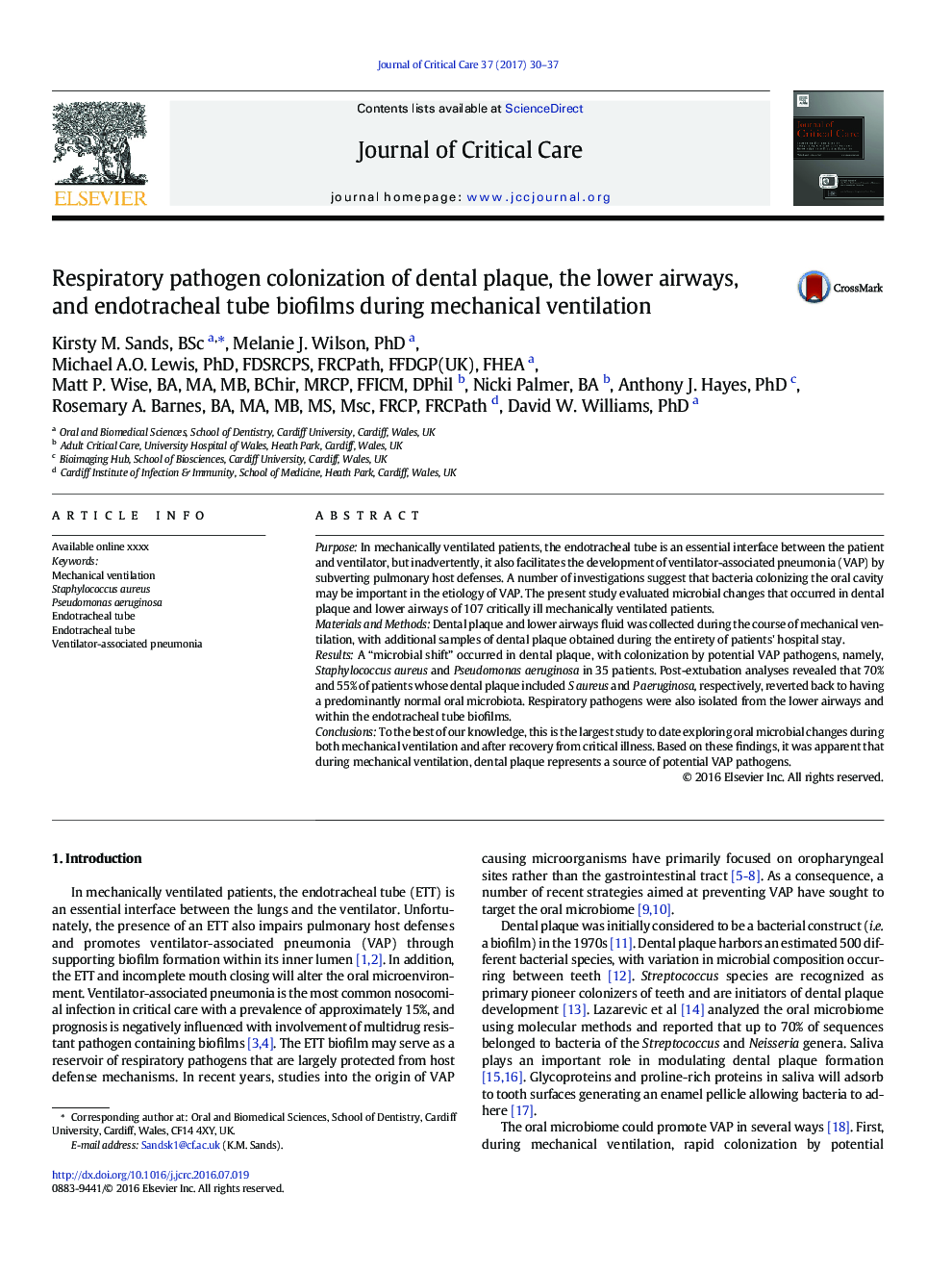| Article ID | Journal | Published Year | Pages | File Type |
|---|---|---|---|---|
| 2764302 | Journal of Critical Care | 2017 | 8 Pages |
PurposeIn mechanically ventilated patients, the endotracheal tube is an essential interface between the patient and ventilator, but inadvertently, it also facilitates the development of ventilator-associated pneumonia (VAP) by subverting pulmonary host defenses. A number of investigations suggest that bacteria colonizing the oral cavity may be important in the etiology of VAP. The present study evaluated microbial changes that occurred in dental plaque and lower airways of 107 critically ill mechanically ventilated patients.Materials and MethodsDental plaque and lower airways fluid was collected during the course of mechanical ventilation, with additional samples of dental plaque obtained during the entirety of patients' hospital stay.ResultsA “microbial shift” occurred in dental plaque, with colonization by potential VAP pathogens, namely, Staphylococcus aureus and Pseudomonas aeruginosa in 35 patients. Post-extubation analyses revealed that 70% and 55% of patients whose dental plaque included S aureus and P aeruginosa, respectively, reverted back to having a predominantly normal oral microbiota. Respiratory pathogens were also isolated from the lower airways and within the endotracheal tube biofilms.ConclusionsTo the best of our knowledge, this is the largest study to date exploring oral microbial changes during both mechanical ventilation and after recovery from critical illness. Based on these findings, it was apparent that during mechanical ventilation, dental plaque represents a source of potential VAP pathogens.
